210 W Washington Square, Philadelphia, PA
Part of the original five squares established by Pennsylvania founder William Penn, Washington Square is a lush haven in a bustling city. Discover the phantoms of this public park.
Sometimes, haunted locations are unexplainable. No deaths. No tragedies. We know they’re haunted, but we don’t know why.
When it comes to Philadelphia’s Washington Square, however, we know exactly where the poltergeist activity stems from: burials.
Southeast Square, as it was originally called, was laid out in 1682. As the city grew, the need for space allotted to burials increased. The Square began to be used as a potter's field from 1704 to 1794.
Potter’s Fields were the designated burial place for paupers, foreigners, and those who weren’t considered worthy of a Christian burial - no wonder these poor souls are restless.
People were buried with the bare minimum. No casket; wrapped up in canvas fabric.
Today, hundreds of years later, Washington Square visitors still encounter the ghosts of the early Philadelphians put to rest here.

According to legend, Washington Square is haunted by the ghost of a Quaker woman named Leah. Centuries ago, Leah protected the burial ground from grave robbers.
Even though most people buried at the site were poor, this wasn’t always the case. Take the Carpenters, for example, a prominent Philadelphia family. They separated a burial site for their family at the center of the Square due to one of their members committing suicide.
This rendered her unworthy of Christian burial.
Graverobbers were known to scope out these prominent interments, dig up the fresh graves, and steal the items the corpses were buried with.
Men known as resurrectionists would resort to body snatching in order to obtain cadavers to sell to physicians for their anatomical studies.
And that’s where Leah comes in…
It’s said that in life, she monitored the grounds, walking around the Square with a lantern and scaring off potential graverobbers (and bodysnatchers).
Even today, some who have visited the park at night feel as if they’re being followed and watched by an unseen presence. Some even swear they’ve seen a bright light floating through the grounds.
Could it be Leah with her lantern?
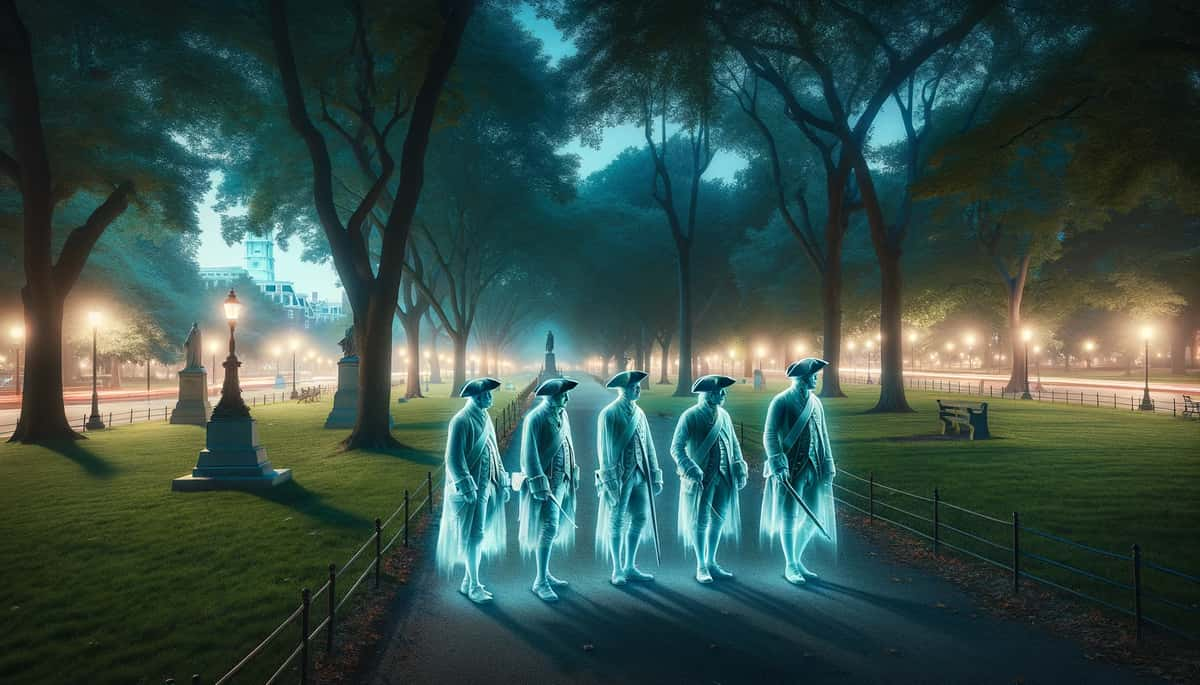
At the center of Washington Square, you’ll find the Tomb of an Unknown Revolutionary War Soldier. Yes, an actual tomb - with remains - in the middle of the park.
In the 1950s, the Washington Square Planning Committee decided to commission a memorial for Revolutionary War soldiers buried at the park.
Since the start of the American Revolution, soldiers who had been wounded while fighting nearby were brought to Philadelphia to receive medical aid. In 1777, when the British occupied the city, the nearby Walnut Street Jail was used to hold prisoners of war.
Their conditions were inhumane, and prisoners would often die off within weeks of incarceration. The dead in the city were promptly transported to the Square where large trenches were being dug.
Bodies were disposed of hastily and stacked on top of each other. In a letter to his wife Abigail, Founding Father John Adams wrote:
The graves of the soldiers, who have been buried, in this ground, from the hospital and bettering-house, during the course of last summer, fall and winter, dead of smallpox and camp diseases, are enough to make the heart of stone melt away!
Many believe that it was this action of no-name dump burials that caused a surge in paranormal activity during the 18th century.
Some Washington Square visitors claim they’ve heard disembodied whispers and screams at the park. The full-body apparitions of soldiers have often been witnessed.
Locals believe that the ghosts of Washington Square mean no harm. They’re only trying to bring attention to the fact that the Square is a burial site and should be respected.
It wasn’t until the Committee erected the memorial in honor of the fallen soldiers that the ghostly activity began to subside. But it didn’t disappear.
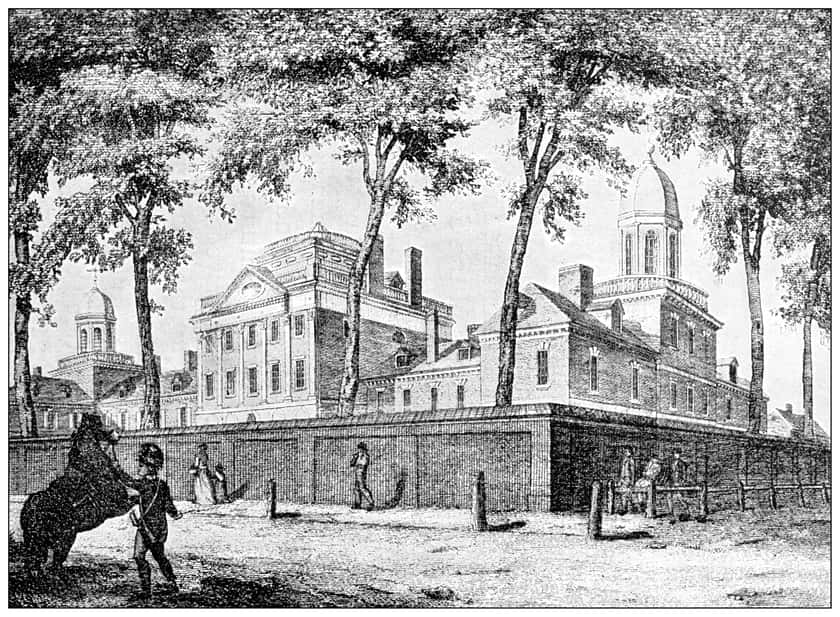
Yellow Jack
is known to have ravaged some of the country’s most important cities during the 18th century. But before it came for cities like New Orleans and Savannah, it decimated Philadelphia.
In just three months, the disease killed an estimated 5,000 residents. The outbreak was so devastating that prominent citizens fled Philadelphia, leaving the poor and working-class population to deal with the deaths.
Bodies were piling up quickly, and there was no time for proper funeral practices. Large burial pits were once again dug in Washington Square to dispose of those who succumbed to the illness.
When visitors to the park begin to feel ill, it’s believed that it’s caused by the spirits of the Yellow Fever victims buried underneath.
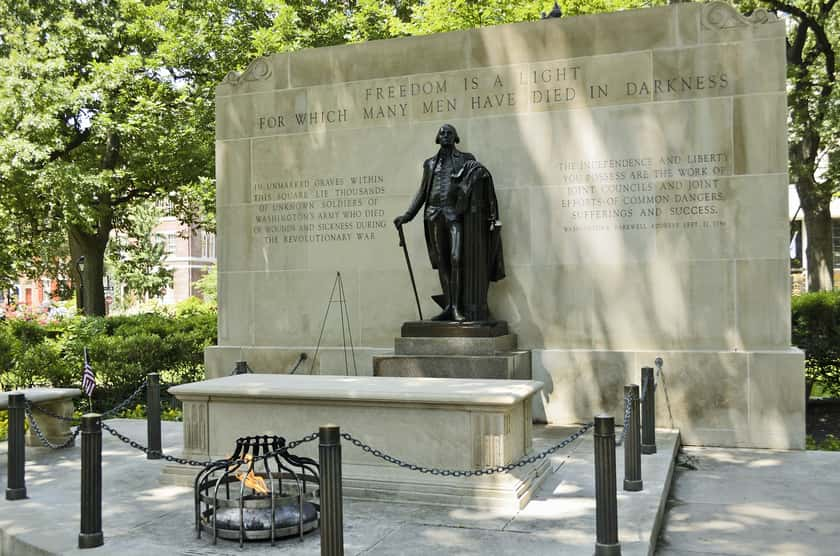
Philadelphia’s Washington Square is open to the public 24 hours a day, seven days a week, making it a perfect spot for after-hour ghost hunts. Stop by to meet some of the city’s most famous specters!
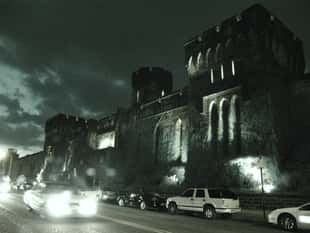
Learn about one of America’s most notorious prisons.
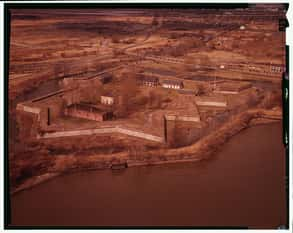
Fort Mifflin is considered one of the most terrifying places in America.
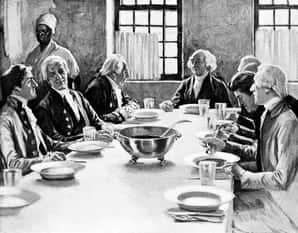
Who haunts this famous Philadelphia landmark?